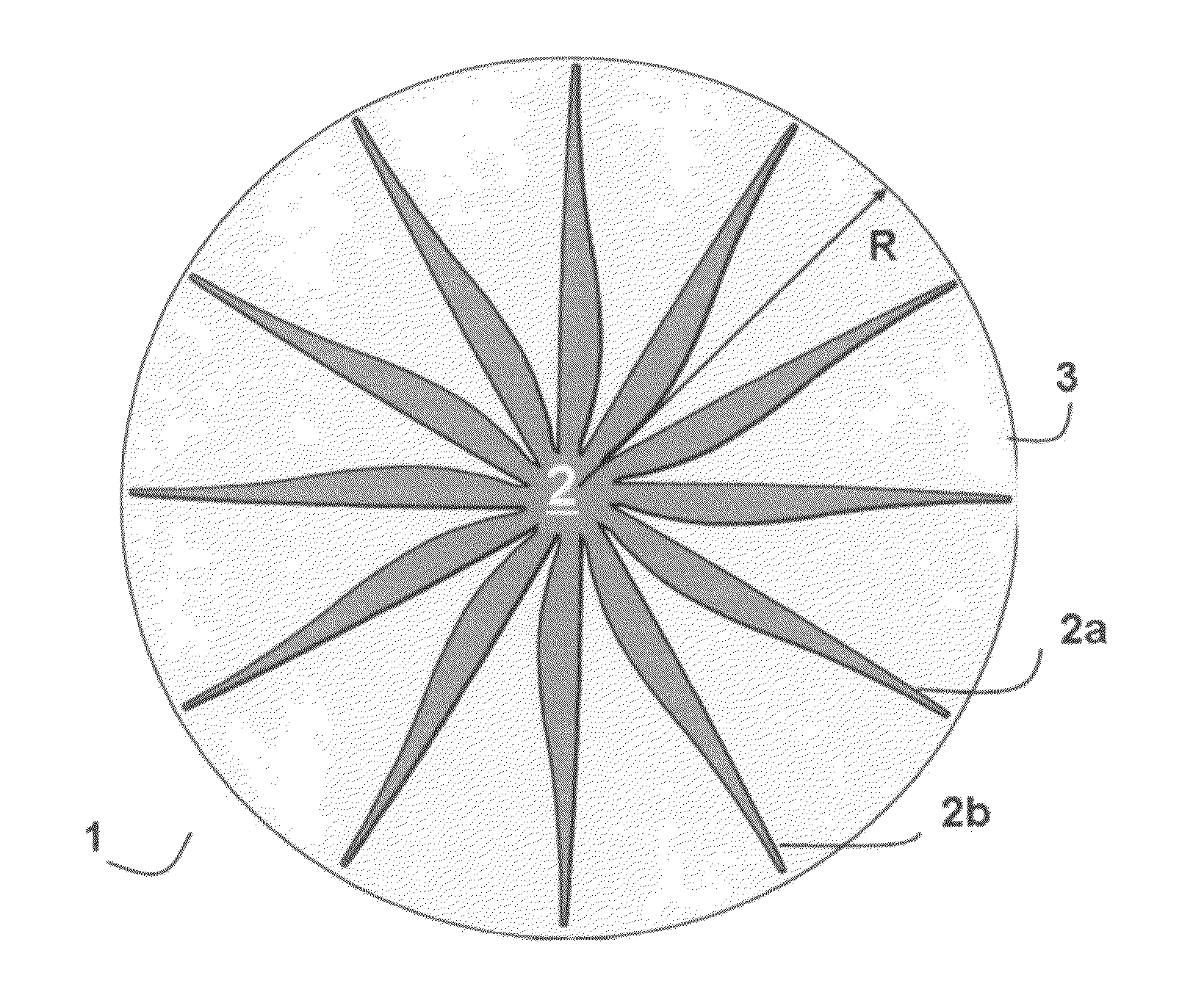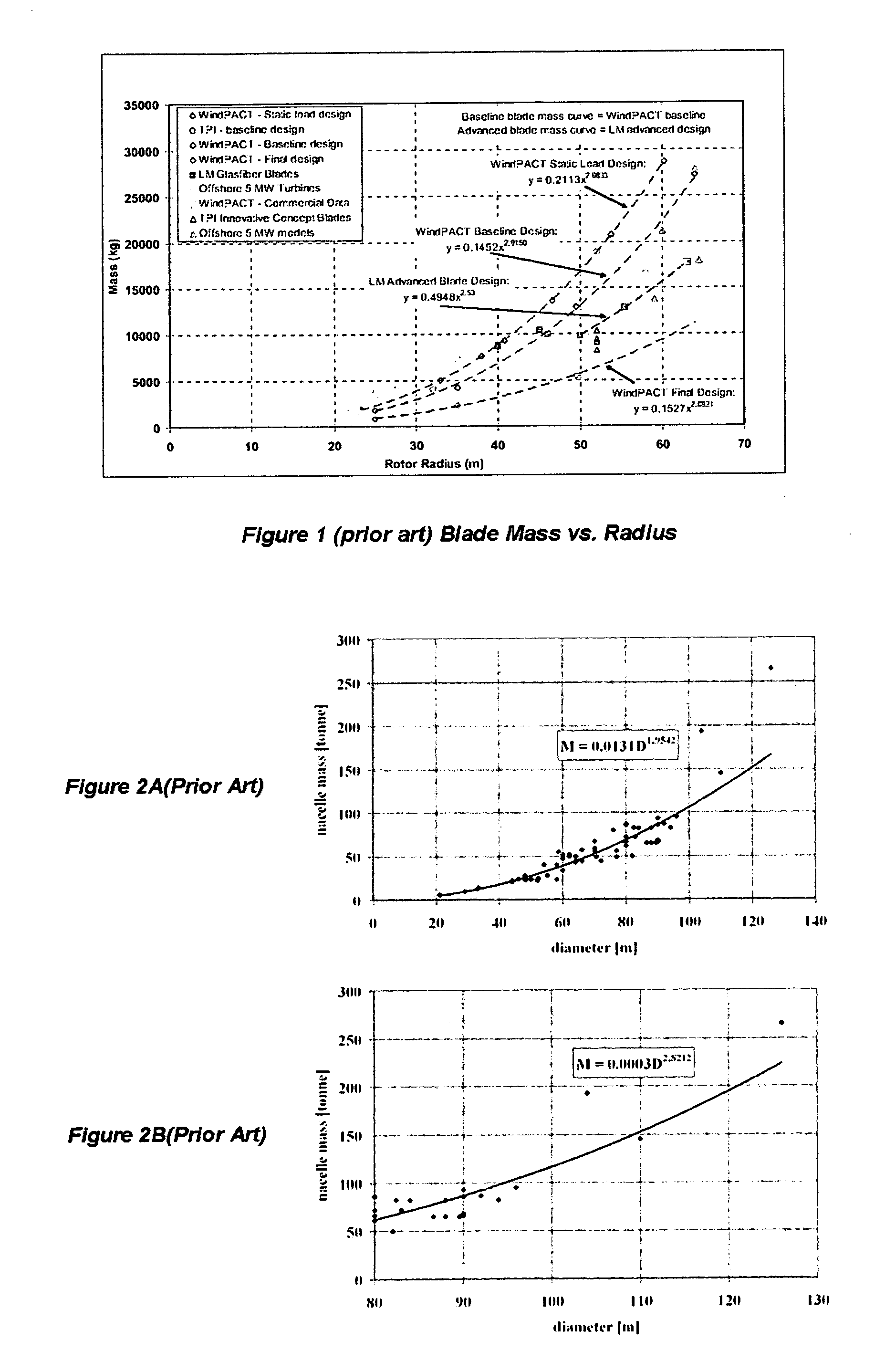Tool and Method for Rapid Design and Reduction of Rotor Mass
a rotor and mass reduction technology, applied in the field of wind turbine design, can solve the problems of inability to accurately relate the aerodynamic parameters to the rotational dynamic parameters of the rotor blade, the inability to accurately relate the blade mass and the incident wind energy interaction, and the limitations of cfd and other simulation tools, so as to reduce the cost power, improve performance, and reduce the effect of mass per kw
- Summary
- Abstract
- Description
- Claims
- Application Information
AI Technical Summary
Benefits of technology
Problems solved by technology
Method used
Image
Examples
second embodiment
[0070]We now show the present invention which is a method and steps to produce mass scaling with respect to strength to weight ratio of the blade material represented by the strength integral Si.
[0071]Step 11: Producing the moment of inertia δIR of the local blade tooth element at point r, to get:
δIR=r2δMR=ρRLδJ (14)
Where
[0072]L=cfRsinα,
and δJ=δTmr / τs, is the local polar moment of inertia of the blade element at r, δTm is local the maximum allowed torque at r, produced by the maximum wind velocity Vm, at point r, and τs is the shear strength that opposes the maximum torque before a permanent damage results to the blade. Substituting δJ and L in Eq. (14) to relate the local mass element δMR to the maximum torque and the strength of the material, thus:
δMR=ρRRcf sin αδTm / rτs (15)
[0073]Step 12: Producing the maximum torque element δTm using Eqs. (2) and (3) and setting Vm=rωm / λr to get:
δTm=δPat / ωm=πρ0(cp(r)Vm2r2dr / λrB) (16)
[0074]Step 12: Producing the blade mass relationship to th...
first embodiment
[0083]The first term 2πρRBPiR3 of Eq. (27) was described according to the
The second term (1+n), is referred to as the Top Head Mass (THM) which is normalized to the rotor mass (2πρRBPiR3) and ranges between 3 for direct drive turbines and 12 in less advanced designs. In absolute mass terms, THM may have values in the range of 50 to 300 ton.
third embodiment
The third term (1+t), is the tower multiplier factor which has values in the range of 1.5-2 and sometimes higher. The fourth term (1+f) is the foundation multiplier factor and has values that range from 2-5, depending on whether the turbine is located on shore, or off-shore. For off-shore locations, (1+t)(1+f) is not only large, but its specific cost / Ton is also very high. According to Eq. (27), it can be seen that the cost of the whole systems is directly related to R3, and the rotor mass has the biggest influence through the multiplier the whole (1+n)(1+t)(1+f) that can range from 12 to 200. For example, a mere 1 ton reduction in the rotor mass leads to a system mass reduction of more than 12 to 200 tons. This influence of the multiplier effect is the basis for this third embodiment which shows that rotor mass reduction of 10× leads a reduction of 100-500× reduction for the whole system for each KW!
[0084]Prior art has pursued advanced architectures aimed at increasing R, but reduc...
PUM
| Property | Measurement | Unit |
|---|---|---|
| mass | aaaaa | aaaaa |
| radius | aaaaa | aaaaa |
| mass MR | aaaaa | aaaaa |
Abstract
Description
Claims
Application Information
 Login to View More
Login to View More - R&D
- Intellectual Property
- Life Sciences
- Materials
- Tech Scout
- Unparalleled Data Quality
- Higher Quality Content
- 60% Fewer Hallucinations
Browse by: Latest US Patents, China's latest patents, Technical Efficacy Thesaurus, Application Domain, Technology Topic, Popular Technical Reports.
© 2025 PatSnap. All rights reserved.Legal|Privacy policy|Modern Slavery Act Transparency Statement|Sitemap|About US| Contact US: help@patsnap.com



